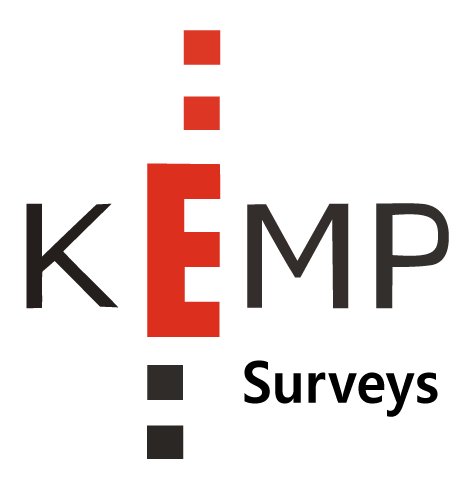How Aerial Surveys Improve Risk Management in Construction
What Are Aerial Surveys?
An aerial survey is a technique used to collect geospatial data from above, using drone, aircrafts or satellites. This provides accurate mapping over large areas and is essential in industries such as construction, engineering, and agriculture.
There are several types of aerial surveys, including photogrammetry, which captures overlapping images to create 3D models, and LiDAR, which uses laser pulses to map terrain.
Aerial surveys are widely used for topographic mapping, infrastructure planning, flood risk assessments, condition surveys and monitoring environmental changes. They can be faster, and safer than traditional ground surveys, especially in difficult-to-reach areas. With advancements in drone technology, aerial surveys continue to play a vital role in modern surveying and geospatial data collection.
What is the purpose of Aerial Surveys in Risk Management
Site Assessment and Analysis
Aerial surveys provide detailed topographic and condition data that help assess site conditions before development or construction begins. By using LiDAR, and photogrammetry, companies can various constraints and obstructions that might otherwise be difficult to quantify. This ensures proper planning and reduces the likelihood of unforeseen risks during construction or land development.
A 3D model created from UAV images
Monitoring and Progress Tracking
Regular aerial surveys allow for real-time monitoring of projects, ensuring compliance with programs and regulations and identifying potential hazards as they arise. They provide a visual and measurable record of changes over time, helping project managers detect issues before they become critical.
So how do Aerial Surveys improve risk management over Traditional Methods Accuracy?
Aerial surveys provide high-resolution imagery and precise geospatial data, which can reduce errors. Technologies like LiDAR and photogrammetry capture terrain details down to a few centimetre-level accuracy, ensuring more reliable risk assessments and hazard detection. This is particularly beneficial for monitoring unstable landscapes, structural integrity, and environmental risks where terrestrial access is limited. This can include caves and confined spaces.
Speed
Unlike traditional surveys, which can take weeks or months, aerial surveys cover large areas in a fraction of the time. Drones and aircraft can quickly scan vast terrains, providing faster data for site assessments, hazard detection, condition reporting and emergency planning. This rapid data collection helps organisations make quicker, data-driven decisions to mitigate risks efficiently.
Safety
Aerial surveys eliminate the need for surveyors to enter hazardous environments, such as unstable terrain, and active construction sites. By using drones, companies can collect crucial data without exposing surveyors to danger, reducing accidents and improving workplace safety.
A UAV image of potentially dangerous terrain for land surveyors
Cost-Efficiency
Traditional surveys often require more manpower, equipment, and time, leading to higher costs. Aerial surveys can reduce labour and operational expenses while delivering faster accurate data. They also help prevent costly planning mistakes by identifying risks early, minimising delays, rework, and damage-related expenses.
Challenges and Considerations
Regulatory Compliance
Operating aerial surveys, especially with drones or aircraft, requires adherence to aviation regulations and airspace restrictions set by authorities like the Civil Aviation Authority (CAA) in the UK. Companies must obtain licenses, permits, and approvals, particularly when surveying urban areas, restricted zones, or private properties. Failure to comply can lead to legal consequences and project delays.
Technical Expertise
Aerial surveys require specialised knowledge in handling drones, sensors, and data processing software. Skilled professionals must interpret LiDAR, and photogrammetry data accurately to ensure meaningful insights. Training is essential for both pilots and data analysts, and integrating aerial survey results with traditional surveying methods can require advanced GIS and CAD expertise.
Cost
While aerial surveys can be cost-effective in the long run, the initial investment in drones, sensors, software, and training can be significant. Additionally, maintaining and upgrading equipment, hiring skilled staff, and ensuring regulatory compliance add to operational costs. Organisations must carefully weigh upfront expenses against the benefits of efficiency, safety, and improved risk management.
Kemp drone pilots are fully GVC A1 grade trained.
Why choose Kemp for your Aerial surveys
Kemp have been at the forefront of aerial surveys since 2014, deploying drones for projects like the Kingskerswell Bypass, one of the earliest uses of UAV technology in the industry.
Our in-house trained pilots operate a range of CAA registered UAVs, ensuring compliance, safety, and high-quality results. Aerial surveys at Kemp are designed to complement traditional survey methods, especially in restricted areas, producing accurate data for as-builts, topographic surveys, and inspections such as cliffs or even culverts or caves.
With over a decade of expertise in this specific field, cutting-edge technology, and full insurance coverage, Kemp is a trusted choice for reliable and efficient aerial surveys.




